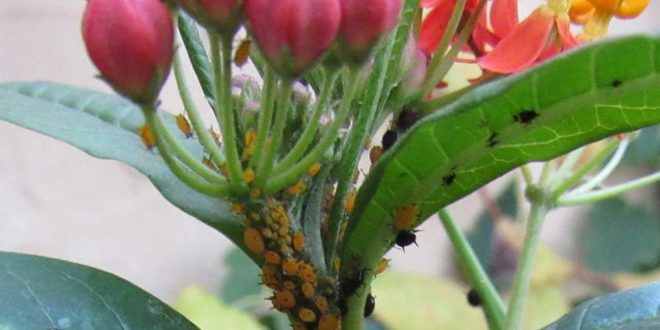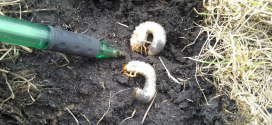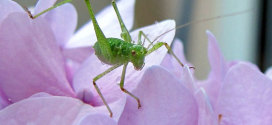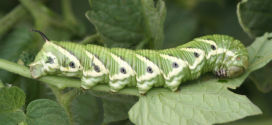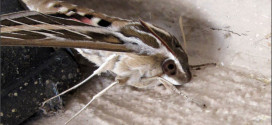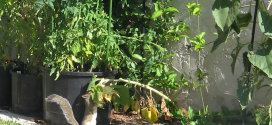Anyone who raises milkweed in an effort to attract Monarch butterflies is familiar with the soft-bodied, squishy orange insects that seemingly take over anything in the Asclepias family.
Before we explore how to kill them, let’s take a look at the interesting life cycle of these ubiquitous, annoying insects, known as oleander aphids, milkweed aphids, or by their Latin name, Aphis nerii.
First off, they are parthenogenic, which means they clone themselves and don’t require mates to reproduce. In addition, the clones they produce are always female. Yes, that’s right–all girls. “No boys allowed.”
According to the University of Florida’s Department of Entomology and Nematology “Featured Creatures” website, “The adult aphids are all female and males do not occur in the wild.” Instead, the aphid moms deposit their all-female nymph broods on the stalks of our milkweed plants. That generation morphs four more times until they grow up to become aphid moms who repeat the process.
Even more interesting, under normal conditions, adult female aphids do not sport wings, but get this: if conditions are crowded, or the plant is old and unappetizing (which happens as the summer progresses in our part of the world), the girls grow wings so they can fly away to greener pastures–or in this case, fresher milkweed. Aphids live 25 days and produce about 80 nymphs each.
This brilliantly efficient method of reproduction, says Featured Creatures, is one of the reasons “large colonies of oleander aphids…build quickly on infested plants.”
Small populations of aphids are pretty harmless to the plants, but when you get a large colony, the milkweed suffers. The aphids insert their piercing mouthparts into the milkweed, literally sucking the life out of it as they enjoy the sweet liquid that courses through the plant. The high concentration of sugar in that liquid means the aphids have to eat a lot of it to get the protein they need.
That results in a profuse amount of excrement, called honeydew. It is prolific and forms a thin, sticky layer on the leaves of your milkweed, choking the absorption of essential nutrients. It can also cause sooty mold, an ugly dark fungi that can cover your milkweed.
Once you have well-established infestation of aphids, the plant just goes downhill. The aphids themselves are also highly appetizing to Ladybugs, wasps and syrphid flies–all insects that eat aphids and Monarch or Queen eggs with equal abandon.
When you get a serious aphid infestation, you can use a high pressure spray of water to blow the bugs off the plant. That simultaneously washes the honeydew off the milkweed, which will deter the arrival of ants and also clean the leaves so they can absorb sun, air, water and nutrients to fuel their growth.
You can also squish the aphids between your thumb and fingers and wipe them off the plant. Your thumb and fingers will turn bright gold, but will wash off.
